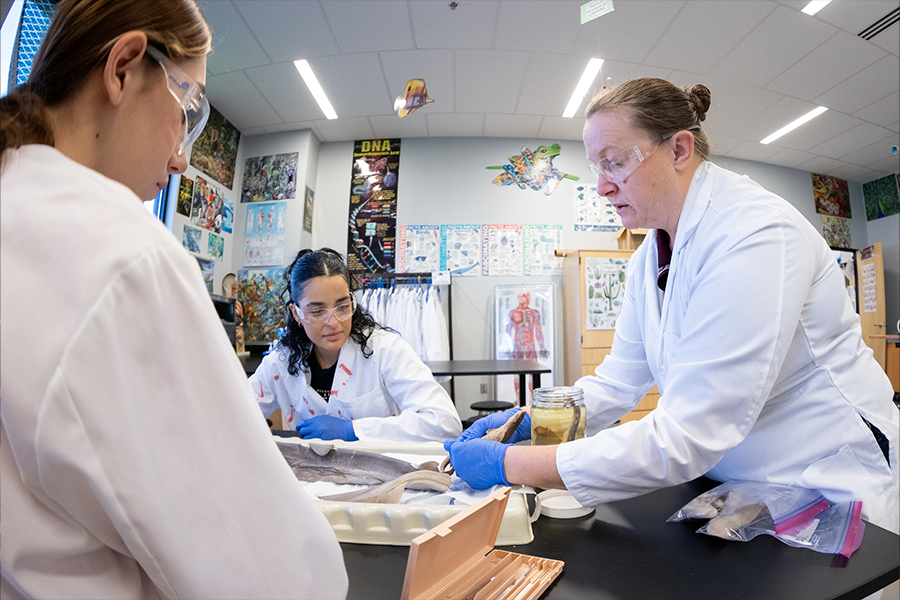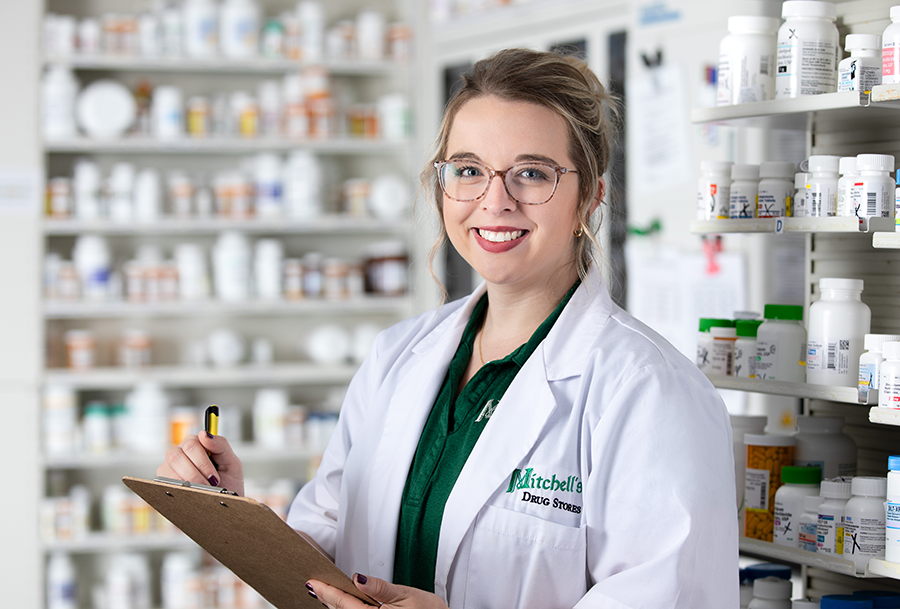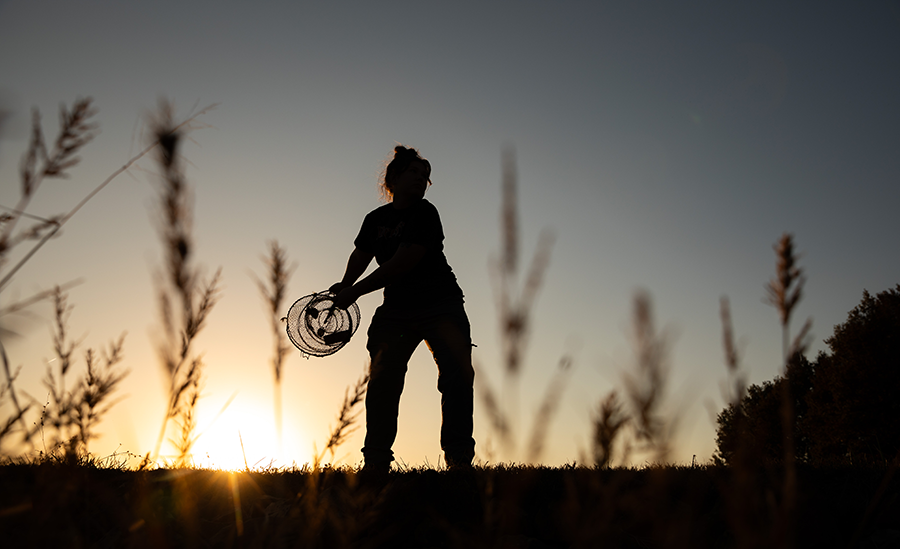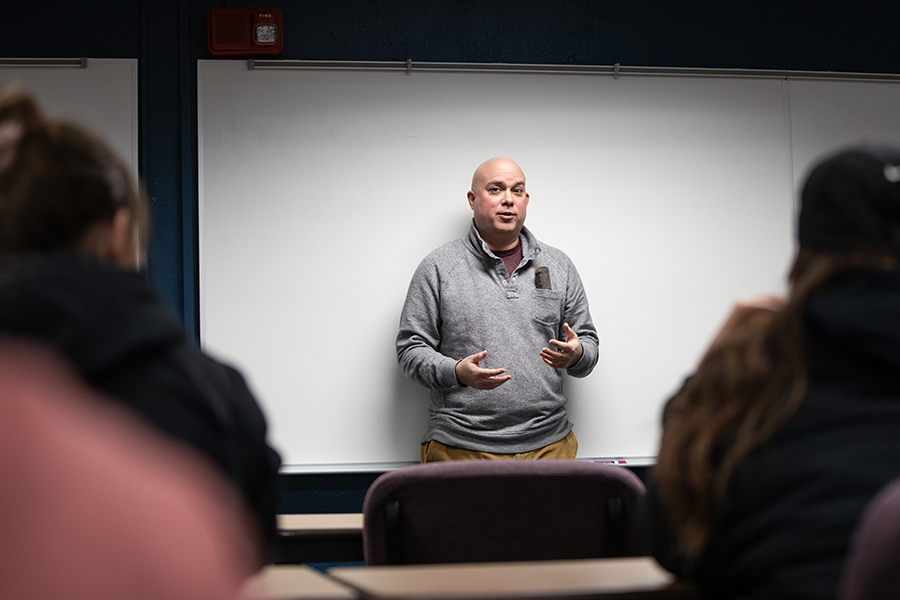Surrounded by illustrated animal diagrams and many jars, beakers, and microscopes, it’s difficult not to be inspired to embark on one’s own research project. In Karisa Boyer’s classroom, her Science Research students do exactly that.
In addition to several other varying levels of science classes, Boyer teaches a unique course simply titled “Science Reseach”, but the content is anything but simple. Each student conducts their own project including research and experiments in accordance with International Science and Engineering Fair (ISF) guidelines implemented by Society of Science, an organization that aims to promote science literacy, STEM education, and scientific research.
With cardboard fish floating above them as witnesses, each Science Research student creates and conducts their own novel research projects. Everything is done independently, down to designing and analyzing their findings.
“I help direct students through independent research, but they coordinate their project which includes a final research paper, research poster, and a PowerPoint talk,” said Boyer. “The students then compete at several events including MSSU Regional Science and Engineering Fair and the MSSU Research Colloquium.”
Boyer is also an adjunct instructor at MSSU, where she graduated with her Bachelor of Science in biology in 2001. She has since received a master’s degree in education, leading to her success in teaching, which is apparent through not only her successful students— some of whom have presented at international science fairs—but also by Boyer’s selection for an extraordinary honor: She is one of three teachers in the country selected to be a national ambassador for Science News Learning for the 2023-24 school year.
Science News Learning is a magazine by Society for Science. The magazine is devoted to publishing new and current science research as well as lessons plans for middle and high school students. As a national ambassador, Boyer will help promote science literacy, support fellow science educators nationwide, and inspire students with interesting and current research. She is also responsible for creating a lesson plan that will be used by science teachers across the country.
“Being selected is a very big honor,” said Boyer. “There are only three ambassadors chosen across the country. I use Science News Learning in my classroom, so it is humbling to think that they entrusted me with this responsibility.”
Boyer’s students utilize Science News Learning in class to learn about current scientific research and coordinate their projects according to the Society for Science’s ISF guidelines.
“The class greatly benefits from Science News Learning as it helps them see what current research is being conducted, how science is communicated, and helps them generate their topic ideas,” says Boyer. “Through the ambassadorship, I get to focus in on some way the publication can help my students and I am able to build my lesson plan around that concept, even presenting Science News Learning to my department to show them how to look for existing lesson plans created by Science News as well as other educators across the country. Good lesson plans benefit both teachers and students.”
Boyer was also invited to Society for Science’s annual High School Science Research Teachers Conference this year in Washington, D.C. There, she interacted with other research teachers and learned how they coordinate student projects and align their classroom goals.
“It was an amazing experience,” said Boyer. “I’m excited about the ambassadorship because I enjoy helping others and love promoting science. It’s going to be a challenge, but I’m ready for it!”
In addition to several other varying levels of science classes, Boyer teaches a unique course simply titled “Science Reseach”, but the content is anything but simple. Each student conducts their own project including research and experiments in accordance with International Science and Engineering Fair (ISF) guidelines implemented by Society of Science, an organization that aims to promote science literacy, STEM education, and scientific research.
With cardboard fish floating above them as witnesses, each Science Research student creates and conducts their own novel research projects. Everything is done independently, down to designing and analyzing their findings.
“I help direct students through independent research, but they coordinate their project which includes a final research paper, research poster, and a PowerPoint talk,” said Boyer. “The students then compete at several events including MSSU Regional Science and Engineering Fair and the MSSU Research Colloquium.”
Boyer is also an adjunct instructor at MSSU, where she graduated with her Bachelor of Science in biology in 2001. She has since received a master’s degree in education, leading to her success in teaching, which is apparent through not only her successful students— some of whom have presented at international science fairs—but also by Boyer’s selection for an extraordinary honor: She is one of three teachers in the country selected to be a national ambassador for Science News Learning for the 2023-24 school year.
Science News Learning is a magazine by Society for Science. The magazine is devoted to publishing new and current science research as well as lessons plans for middle and high school students. As a national ambassador, Boyer will help promote science literacy, support fellow science educators nationwide, and inspire students with interesting and current research. She is also responsible for creating a lesson plan that will be used by science teachers across the country.
“Being selected is a very big honor,” said Boyer. “There are only three ambassadors chosen across the country. I use Science News Learning in my classroom, so it is humbling to think that they entrusted me with this responsibility.”
Boyer’s students utilize Science News Learning in class to learn about current scientific research and coordinate their projects according to the Society for Science’s ISF guidelines.
“The class greatly benefits from Science News Learning as it helps them see what current research is being conducted, how science is communicated, and helps them generate their topic ideas,” says Boyer. “Through the ambassadorship, I get to focus in on some way the publication can help my students and I am able to build my lesson plan around that concept, even presenting Science News Learning to my department to show them how to look for existing lesson plans created by Science News as well as other educators across the country. Good lesson plans benefit both teachers and students.”
Boyer was also invited to Society for Science’s annual High School Science Research Teachers Conference this year in Washington, D.C. There, she interacted with other research teachers and learned how they coordinate student projects and align their classroom goals.
“It was an amazing experience,” said Boyer. “I’m excited about the ambassadorship because I enjoy helping others and love promoting science. It’s going to be a challenge, but I’m ready for it!”




